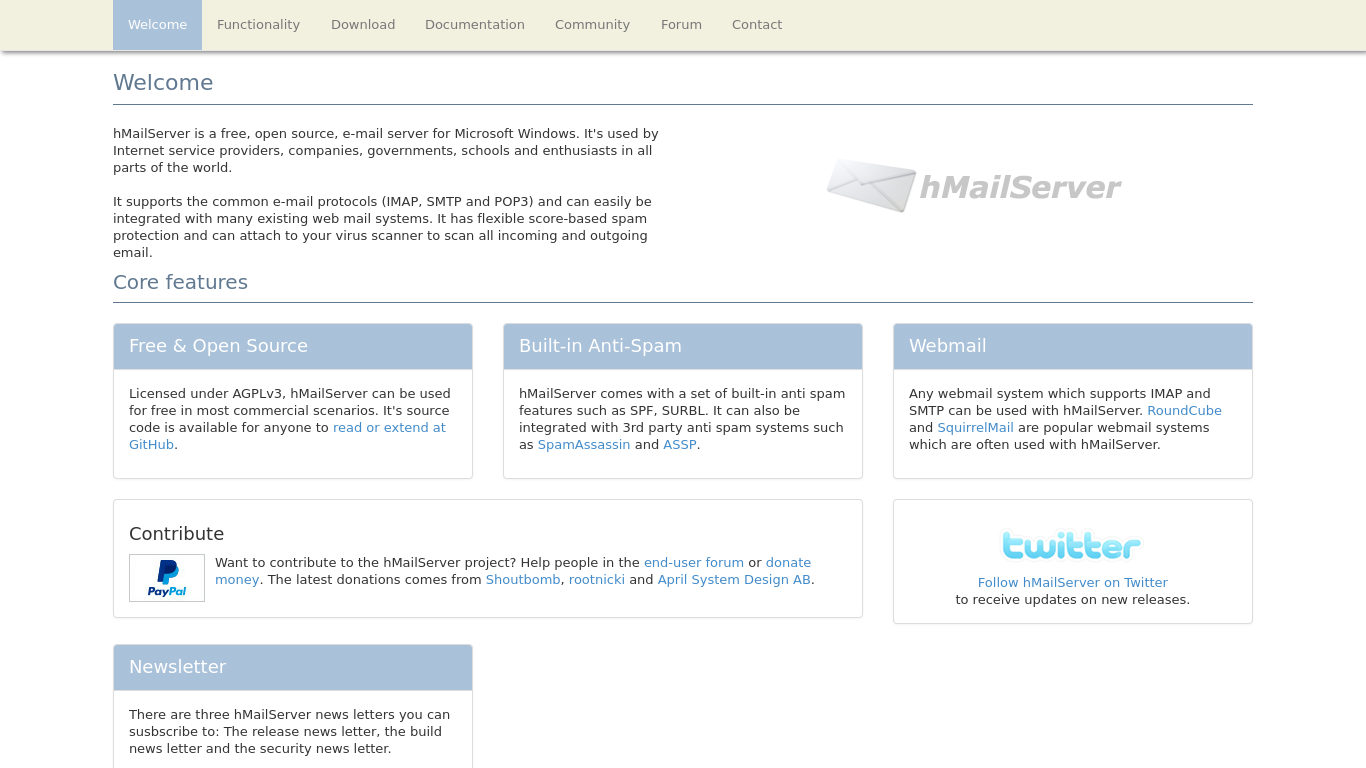

The database of choice will be used to store some configuration options and, most importantly, the message base with all their indexes: that's why it's really important to choose something reliable, expecially if you're setting up a production environment. The authors, other than reminding us that Microsoft SQL Server CE is not allowed to host commercial products, suggest the use of Microsoft SQL Server or PostgreSQL for their performance, security and overall integrity benchmarks.

MySQL 4 or higher (5.x being totally fine).Microsoft SQL Server Compact Edition (CE).Microsoft SQL Server (2000 o superiore).The installation is straight and forward, but in case you need help you can take a look to the official documentation's installation guide chapter. Pay close attention when the setup wizard will prompt you to select the Database type you'll want to use:Īs of today, hMailServer v5.6 currently supports four different database types:
#HMAILSERVER INCORRECT GREETING DOWNLOAD#
Not bad at all, isn't it? Installationįirst thing you've to do is to download the latest version of hMailServer from the Download section of its official site. On top of that, thanks to its highly-customizable configuration settings and interface, you can also configure it as the default WebMail client for some of the most-used Ajax/PHP/.NET e-mail handling web-based frameworks ( RoundCube, SquirrelMail, etc.).
#HMAILSERVER INCORRECT GREETING SOFTWARE#
In this post we'll test the 5.6 hMailServer build - january 2015 - which is fully compatible with all Windows server and desktop major versions and builds from XP/2003 to Windows Server 2012 R2 and Windows 10. The software is bundled with a a really good pack of features: it supports all the MTA protocols & standards (POP3, SMTP, IMAP), a web-based Administration and/or e-mail handling management GUI available in all major languages, an extensive and well-written documentation available either online and offline, plus a lot of advanced features such as: If you're up for it, here's a link to buy a Microsoft Exchange: if you're looking for a way to save some cache you could give a chance to hSendMail, a not-yet-so-much-known Open Source Mail Server for Windows developed by Martin Knafve - recently released upon AGPL license -which this post is mostly about. You might also have noticed that they are either Unix only or Commercial, meaning that if you're using a Windows server you've got to pay another bill.


 0 kommentar(er)
0 kommentar(er)
